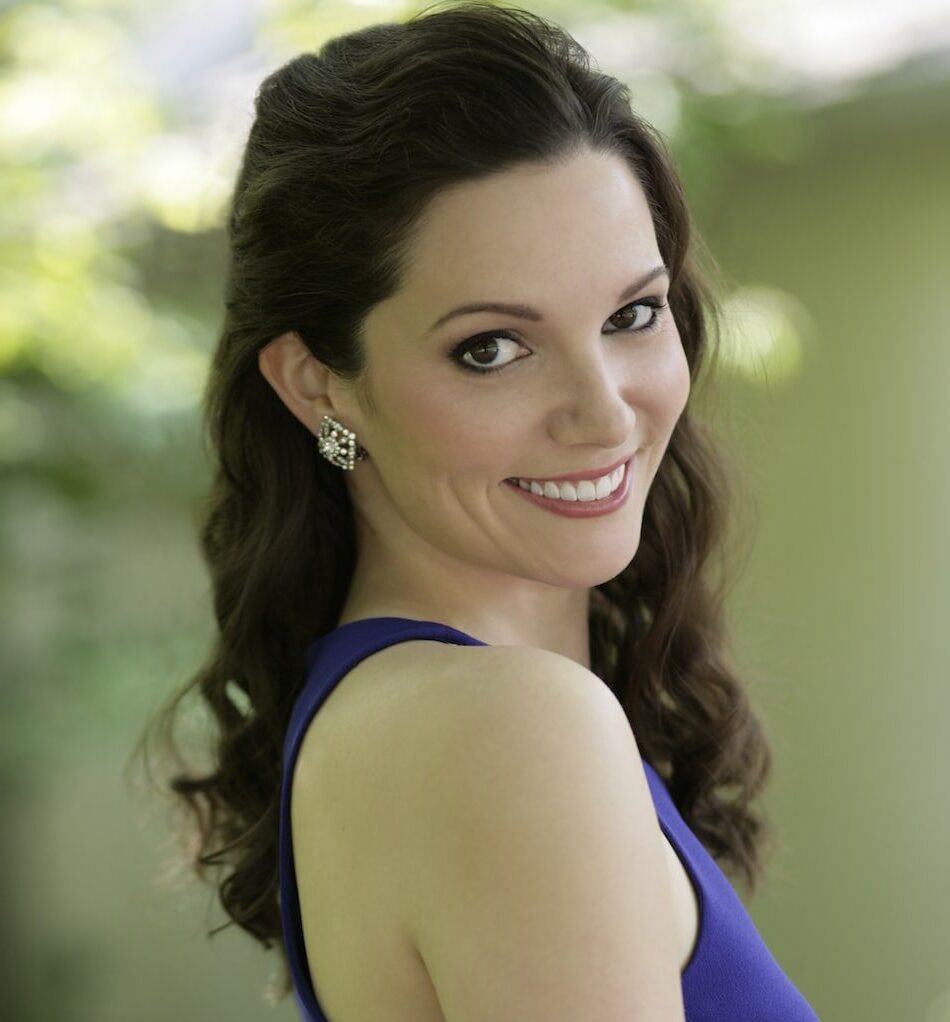“I realized that what was interesting to me was the messy middle of being in between two cultures” – Mireille Asselin
A singer deemed “superb” by the Los Angeles Times, and praised by Opera Canada for her “vivacious stage presence” and as a “soprano that charms and brightens a room”, Mireille Asselin has performed all over the world including five seasons at the Metropolitan Opera.
Mireille is now bringing it home for an intimate concert, sharing her warm personality, extraordinary talent and other exciting work she loves by French Canadian creators.
Tell us about Our Song D’Hiver. What can we expect from the performance?
This program was born out of a discussion with Tapestry’s intrepid leader, Michael Mori, about French-Canadian identity and how we could bring something that would showcase this important aspect of Canadian heritage to the stage. That led me to think about my own relationship to my French roots and upbringing. I’m in fact half Francophone and half American, and I grew up entirely in French minority communities outside of Québec.
Consequently, I’ve never felt I really fit in with any one community… never felt “French enough”. Belonging to, or coming from a few different cultures is a more and more common experience as our world becomes more multicultural, and I realized that what was interesting to me was the messy middle of being in between two cultures. Our Song D’Hiver will be part storytelling, part recital, part show-and-tell, but all celebration of bilingualism and of Francophone creators who also live in the in-between.
You’ve had such a diverse career spanning concert, opera and recital work. How has your experience impacted your approach to creating Our Song D’Hiver?
For many years, the relationship between English and French Canada has been described as the Two Solitudes / Les Deux Solitudes. In a lot of ways, this solitude and isolation still very much exists. The two music scenes are separate, the performers don’t really cross-pollinate even though we are so geographically close, and consequently tons of the great art that is being made by French-Canadians doesn’t make its way to Toronto stages. My experience with that gulf definitely influenced the curation of this program.
Our Song D’Hiver celebrates great music being created in Canada right now. Which artists are you working with, and what do you love most about their work?
The person I’m the most excited to be working with is my pianist Frédéric Lacroix. Fred was my first ever vocal coach when I was in high school and is one of the very best pianists and collaborators around. Seriously, he’s Canada’s best kept secret as far as I’m concerned. He’s also a brilliant composer and I’m so excited to premiere on this program a short song cycle he wrote back in 2003 called “Wednesday Night Haikus”. Fred set eight haikus to music, one for each of his Wednesday night coaching students, as a graduation gift to all of us.
For those who keep track of the opera scene, you’ll surely recognize a few names in the dedications – Meghan Lindsay, Sharleen Joynt, and myself, among others! I’ve been wanting to find an opportunity to perform this cycle for years and I’m so excited to be able to share it with Tapestry audiences. I’m also very excited to feature some great artists such as fantastic Acadian guitarist, Maxim Cormier (I saw him play in the Red Shoe Tavern in Cape Breton years back and he made such an impression I tracked him down), Élise Gauthier who created a beautiful poetic-cinematic exploration of identity I can’t wait to share, and compositions by up-and-comer Félix-Antoine Coutu, acclaimed Métis composer Ian Cusson, the brilliant Franco-Ontarienne Marie-Claire Saindon and many more.
What’s exciting about making art for online platforms, and how does this differ from your usual artistic process and practice?
Creating for an online film medium is a brand new frontier for me, and one that most of us in the music world have had to dive into head-first over this past year. We’ve tried to essentially keep to the traditional recital format with this concert while taking advantage of the digital tools at our disposal, such as being able to weave in separate video content.
Since it will all be experienced on a screen, it allows for some play with how different visual elements can be integrated, like how audience members can take in translations or show notes, how to cut and transition between pieces, and how to integrate story telling, all without jolting the viewer out of the concert experience.
Our Song D’Hiver premieres on Tapestry Opera’s YouTube channel on March 6, 8pm.
